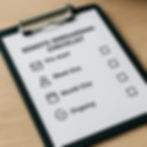Global Fashion Recruitment: Your Ultimate Remote & Hybrid Hiring Playbook
- Stephanie Jackson
- Jul 15
- 3 min read
The post-COVID world demands you build fashion teams spread across continents—so whether you’re hiring an NYC stylist, a Shanghai product developer, or an e-commerce manager in Bali, you need a remote first playbook.
It isn’t just about Zoom calls and Slack channels; it’s about keeping your brand’s spark alive no matter where your people live. Let’s dive into the practical tools, smart tactics and ready made templates you can use today.
Why Remote Works (and When It Doesn’t)

if you need help hiring remote staff, we can help—learn about our fashion recruitment services and how we’ve built global teams that thrive from anywhere.
Remote working isn’t a fad, it’s a mindset. It works brilliantly when your role relies on creativity, independent research and written or digital output. Think design briefs, trend forecasting, digital marketing. Those can be done just as well (sometimes better) from a cosy home office.
However, it’s not perfect for every function. If you’re recruiting for an in-store visual merchandiser or runway stylist, you’ll need at least some on the ground time. That’s where a hybrid model shines: core design and planning happens remotely, then you bring everyone together for a runway trial or pop-up launch. Balancing remote autonomy with face to face collaboration keeps costs down and culture alive.
Top 3 Video Interview Platforms

Zoom – The industry darling. Reliable, easy to use and everyone knows it. Breakout rooms are a lifesaver for panel interviews.
Microsoft Teams – If your organisation already lives in Office 365, Teams integrates seamlessly with calendars and files. Handy for sharing portfolios on the fly.
HireVue – Designed specifically for recruitment. It offers on-demand video questions, so candidates can record responses at their convenience. Useful for screening large applicant pools.
Each platform has its quirks, so pick one that aligns with your volume, budget and the technical savviness of your candidates.
Asynchronous Skills Tests & Assignments

Not all assessments need to happen in real time. Asynchronous tasks let candidates prove what they can do without you watching their every move.
Design Brief AssignmentAsk a junior designer to create a quick mood board in Canva or InDesign, then submit a PDF. You’ll see their creativity, sense of branding and ability to follow instructions.
Copywriting SampleFor marketing roles, give them a short product description or a 100-word Instagram caption task. Evaluate tone, brevity and brand fit.
E-commerce AuditRequest a five-slide deck critiquing your site’s UX or social media feed. It reveals their analytical skills and eye for detail.
Set a reasonable deadline (48–72 hours) and make sure the instructions are crystal clear. You want to test talent, not task management.
Sample Remote Onboarding Checklist

A structured onboarding is your secret weapon to make new hires feel part of the team from day one. Here’s a quick template:
Pre-start
Send a welcome email with team org chart, brand guidelines and a shout-out video from the CEO
Share access links: Slack channels, Google Drive folders, project management boards.
Week One
Day 1: Virtual meet and greet with the team, IT setup check, brand deep dive session
Day 3: First shadowing session on a live project—design review, client call, whatever fits their role
Day 5: Feedback chat: how’s the tech? how’s the team? any early questions?
Month One
Assign a “buddy” for ad hoc questions
Schedule a one-hour training on your core processes: product sourcing, creative approvals, client reporting
Deliver a small “win” assignment to build confidence.
Ongoing
Weekly check-ins for the first quarter
Quarterly review of goals, culture fit and professional development
Day in the Life Calendar Template
Showing candidates exactly how their week will look helps set expectations and filters out those who aren’t a great fit. Here’s a sample Monday for a remote fashion marketing manager:
Time (GMT) | Activity |
09:00 | Quick team sync up (video) |
09:30 | Review weekend social media performance metrics |
10:30 | Coffee break and Slack catch up on informal #watercooler |
11:00 | Draft Instagram stories for upcoming product launch |
12:30 | Lunch |
13:30 | Cross-functional call with design and e comm teams |
14:30 | Edit product descriptions for the website |
15:30 | 15-min one-on-one with direct report |
16:00 | Work on quarterly content calendar |
17:30 | Wrap up, send end of day summary email |
You can adapt this template for different roles, just slot in the key activities and tools (e.g. Figma, Shopify, Google Analytics).
Conclusion
Building remote and hybrid fashion teams doesn’t have to feel like herding cats across time zones. With the right video tools, asynchronous assignments, a bullet-proof onboarding process and clear “day in the life” templates, you’ll attract and retain top talent from anywhere in the world. Give these tactics a whirl and you’ll wonder how you ever did it any other way.
Thanks for reading, here’s to building a fashion team that truly knows no borders.










